ISM Long Term Test
My quest for saddle greatness (and comfort) has been many years in the making. Saddles and handlebars are my cycling vices. I just can’t get enough of them. There’s always more out there to try, and the grass is always greener. Or is it? At least with saddles, I have come to a stopping point. I dare to say: My quest may be over. Well, I suppose it is never really over, but I could ride happy for the rest of my life if there were no new saddle designs, ever.
What caused my change of heart? ISM. More specifically, their Breakaway model.
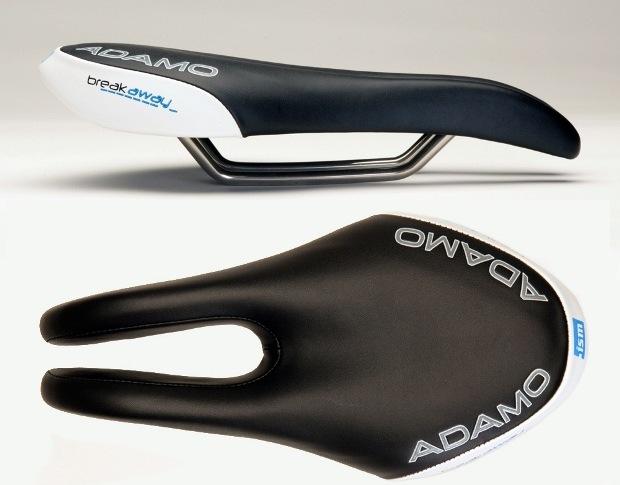
And believe me, I’ve tried a ton of other saddles. Off the top of my head, I can think of 14 others, from all different manufacturers (but there are probably more). I’ve tried cutout saddles and solid saddles. I tried wide, narrow, firm, and plush… gel, foam, carbon-railed, and diamond-tipped uranium. Well… maybe not that last one. But I’ve tried a lot of them.
What ultimately led me to try ISM was similar to the experience of my peers: general discomfort. While I wasn’t a victim to the numbness that some men report, don’t think I completely ignored the topic of potential blood flow restrictions to that – ahem – region. ISM looked like it was worth a shot.
It was unlike any other saddle I’d seen or tried. Yes, I’d tried cutout saddles before, but this was different. It wasn’t so much cutout as completely split in half in the front, and clearly missing anything you could call a “nose”. My good friends Sarah Haskins and her husband Nate Kortuem let me borrow one of their old ISM saddles, and I was off and running. And – since today is the 4th of July – I should mention that was one of their original red, white, and blue saddles from when Sarah was a resident at the Olympic Training Center here in Colorado Springs. If she could ride fast on this saddle, maybe I could too.
My first one to try was the Racing (now called Racing II, pictured below). I was satisfied with my tri bike fit at the time, so I figured the best way to set up this saddle was to fit from the bars back. Because the dimensions were so different from every other saddle I’d used, there was no way to perfectly calculate where it should go. I knew the stem length and aerobar length were right for me, so they stayed put, and I intended to push the saddle fore or aft to get my reach back where it was. I took a stab and installed the saddle in a place that I thought was in the ballpark.
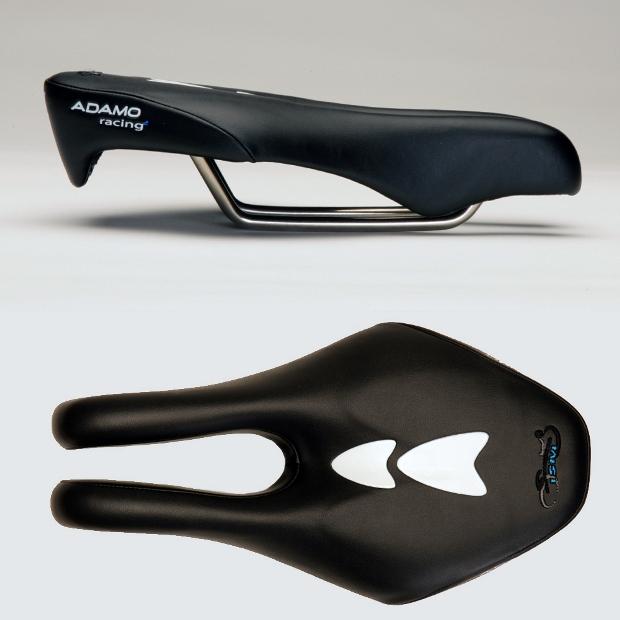
Then I rode my bike. I rode… and then stopped to fiddle. And then I rode some more. This went on for the better part of an hour. I wasn’t so sure about this saddle – it just seemed so different, and I couldn’t get it anywhere that felt right. I kept moving the saddle further forward and down, a few millimeters at a time. I seemed to be moving it all over the place. By the end of my 90 minute ride, I was happier, but not “sold” by any means. Determined, I continued to fiddle for the next few rides.
Over time, I realized a few things:
1) Saddle firmness is highly individual. To be frank, the Racing was just a little to firm for me, so I ended up changing to the Road (which is the same shape, but softer). Problem solved.
2) You simply sit on these saddles differently, and it takes time to get used to. As we’ve pointed out in the past, riding a traditional road saddle on a triathlon bike requires that you “pick a side” for your tender parts to sit on – those saddles have a convex shape. The ISM saddles are most certainly concave, however, so you sit dead-center on them. No leaning to one side or favoring one leg. For quite a while, I was getting a “hot spot” on one side. Simply put, I was accustomed to putting more weight down on that side of a traditional saddle. With the ISM, I couldn’t get away with that. It took a long time to re-learn just how to sit evenly and relax. Eventually this went away, but it was not easy to un-do years of bad habit.
3) My custom bike wasn’t designed for this saddle, and how I ride. My previous saddle that I had ridden for a couple years was the Profile-Design Tri Stryke – still what I consider to be a good saddle for many people. But it is quite long in the nose, which gives you an extra couple degrees of effective seat tube angle. I was used to this very steep-riding saddle, and had designed my custom bike at 76 degrees, so I could have the saddle clamped in the middle of the rails. With the ISM Racing, I ended up pushing the saddle all the way forward (on a zero setback post), and still wanted a little bit more. This is of no fault to the saddle or bike; I just didn’t consider both when designing the frame. An easy fix would have been to use a slightly set-forward post, such as the Thomson Elite. However, I had plans for a new bike in the near future, so I waited it out.
Around the same time, I got a then-new ISM Podium to try out. This model was intended to be more of a ‘road’ saddle, insomuch that it is longer and looks a little bit more like a traditional saddle (at least when viewed from the side). In my experience, it is effectively a little bit wider than the Racing and Road. By that I mean – it seems to be wider towards the nose of the saddle, and has a larger platform of real-estate at the rear (note that the max width of both the Podium and Racing is 130mm). And I don’t really think it matters what type of bike you ride this saddle on; whether road, tri, or unicycle.
At the time I got the Podium, I didn’t quite understand where it fit in to the product line, so I’ll try to clear it up for you. It works something like this: The Racing and the Road are the same exact shape. The Racing is firmer, the Road is softer. Similarly, they have the Podium and Breakaway, which are longer overall, tapered more in width, and flatter on top. The Podium is firmer, and the Breakaway is softer. They’ve also added third, even softer option in the ‘Podium shape’ for 2012 – the Prologue, pictured here.
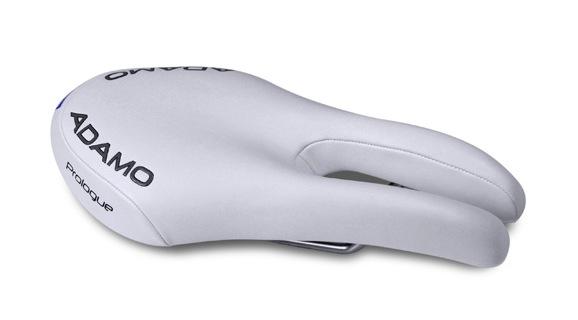
I got the Podium for the shape, but didn’t realize it was essentially the same firmness as my original Racing – which is to say, a touch too firm. Eventually I wised up, and landed myself on a Breakaway (same shape, but softer). Cue silence… pause… and applause. This was it. It took Goldilocks three tries to find the porridge that was just right, but she knew success when she found it. This saddle nit picker had found his “juuuuust right”. I’ve now been on the Breakaway for over a year.
What can you gain from my experience? Unfortunately, I cannot tell you which level of firmness is right for you. In terms of shape, I think it largely depends on whether you tend to like a wide or narrow saddle. If you like a little bit wider and/or tend to move around a lot, go Podium/Breakaway/Prologue, and choose your level of firmness. If you like a little bit narrower saddle, and tend to stay put in a single position, try the Racing or Road – and again pick your level of firmness. There isn’t a right or wrong answer… Andy Potts rides the Road. Michellie Jones is a long-time fan of the Racing. Julie Dibens likes the Podium. You may like something completely different. They’ve also added a brand new saddle this year called the Time Trial. This saddle is essentially a revision of the Racing II; it is of similar shape and firmness, but features the slightly downward sloping nose, similar to the Podium/Breakaway/Prologue family.
The new ISM Time Trial (note the "Racing" shape, with slight downward sloped nose):
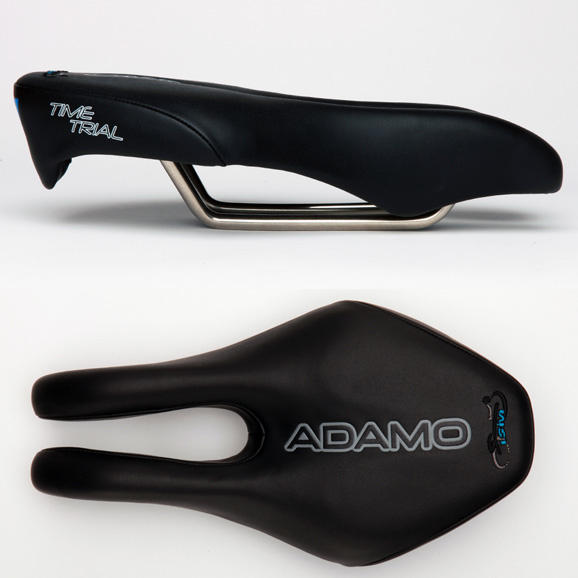
Whatever you choose, my advice is to give it time. These things are really different than your traditional old road saddle. You must learn to perch yourself aboard them, rather than resting to one side. Also, at some point we must all understand that there isn’t a single bicycle saddle in the world that will be as comfortable as grandpa’s old recliner. It’s a saddle, not a bean bag chair. You’ve got your weight distributed over a pretty small area, and for a much longer time than our human bodies are expecting or designed for. ISM saddles simply tend to shift that weight distribution wider and further rearward – to your sit bones, rather than more tender parts. But keep in mind: Your body is still bearing weight in a small area, just a different place. You will still feel “pressure”… that’s called your body weight (and if you want to change that, say “no thanks” to that second round of donuts). Especially for the first few weeks, you will likely not be accustomed to the feeling. Be sure to use chamois cream, too.
So we’ve heard a lot about the good points of these saddles? What about the bad? To be perfectly honest, I struggled with this. This is due in small part to the fact that I really like the people at ISM. Throughout this process, and simply by being in the industry, I’d gotten to know them well. They strike me as good people, who truly believe in what they sell.
Michellie Jones, who I’ve known for quite some time, is an ISM employee and runs their sponsorship program. Yes, that Michellie Jones… the former Olympic medalist and World Champion. She had bugged me for years to try one, and was gave me the look of, “FINALLY!” when I finally did. And I had to give her the look of, “Yes, you were right” in return. This all being said, however, I have no contract with them as an athlete, and there are certainly many athletes aboard their saddles who are much more talented than me. I told them up-front that it is my duty as a journalist to write an objective, un-biased review.
So then, what are the negatives? You can certainly argue in the name of appearance – these saddles just don’t look “normal”. No two ways about it. Do I personally care? Not really. But some people can’t seem to get over it. I can tell you that I have an ISM on each of my bikes, including my mountain bike. There has been more than one occasion at the trail head where I get a curious question of “What’s THAT?” If nothing else, it’s a conversation starter. And it’s certainly an easy way for ISM to spot incognito usage in the Pro Peloton…
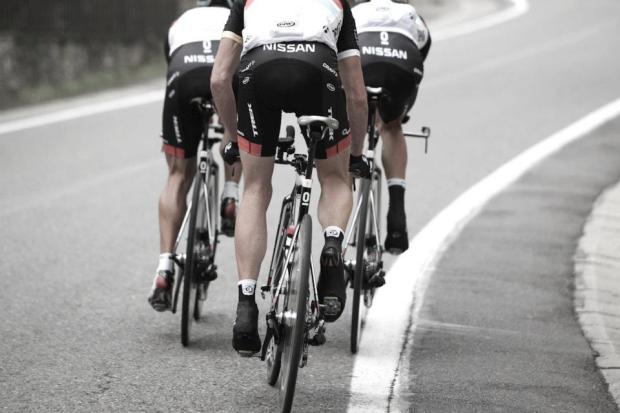
I can also bring up my issue of saddle rails. For some reason, my body tends to like riding steep (relatively far forward) – on all of my bikes. Even on my mountain bike and cyclocross bike, I have the saddles pushed nearly all the way forward, and I even have zero-offset seatposts. You could argue that the saddle rail placement isn’t far forward enough. But – I have a friend who rides the exact opposite… ISM saddle slammed all the way back – on a setback seatpost.
My tri bike seatpost and saddle:
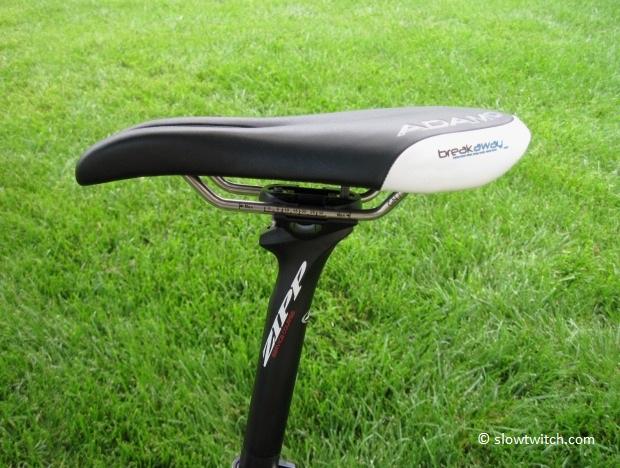
This is an age-old issue that no saddle manufacturer can solve. People just ride differently, and sit on saddles differently. Ultimately, I think ISM has done a good job of finding a middle ground and accommodating as many riders as possible; their saddle rails are quite long and allow a good amount of fore/aft adjustment. I should also note that I don’t have any of my saddles completely maxed out in the forward position, so there is a little more room to give if I needed it. Part of this also rests with your seatpost clamp design.
My saddle is technically forward of the max line, but you can see that the rails are still fully supported:
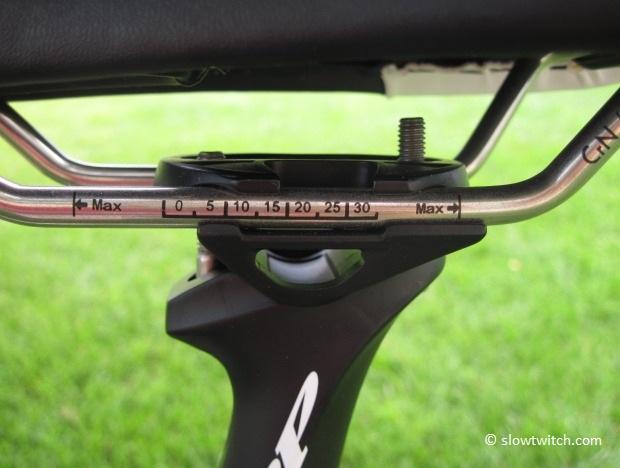
That’s it. Really. I can’t think of anything else negative. Perhaps they aren’t as light as the super weight-weenie saddles out there, but that’s of zero concern to me. I just can’t-won’t-don’t ride an uncomfortable saddle just to save a few grams.
At the end of the day, I can’t guarantee that an ISM will be right for you. Saddles are such a tough sell – I imagine similar to what running shoe manufacturers go through. You can have all of the best intentions in the world, but if someone doesn’t find your product to be comfortable to them… you can’t just talk them out of it. My sneaking suspicion with some folks who dislike ISM is that they may have not given it enough of the old College Try. As I mentioned of my personal experience, some of my initial dissatisfaction with the saddle was due to my own physical dysfunction and bad habit. It was not a “plug and play” type of product that I instantly fell in love with. But now… now, I dare say I could never go back.
How would you know if an ISM is right for you? If you’re like me, and have tried several traditional-type saddles, all with a success rate of “so-so”, you may consider trying one. If you are one of those guys who ride with a highly down-tilted saddle, I’d consider you a perfect candidate (you’re trying to sit more on your sit bones). And if you regularly have numbness on a traditional saddle, well… you know what to do.


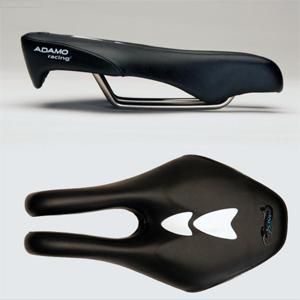
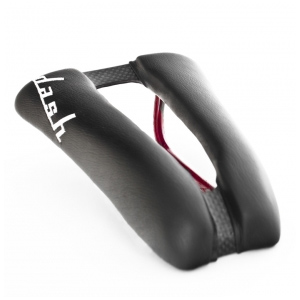
Start the discussion at slowtwitch.northend.network